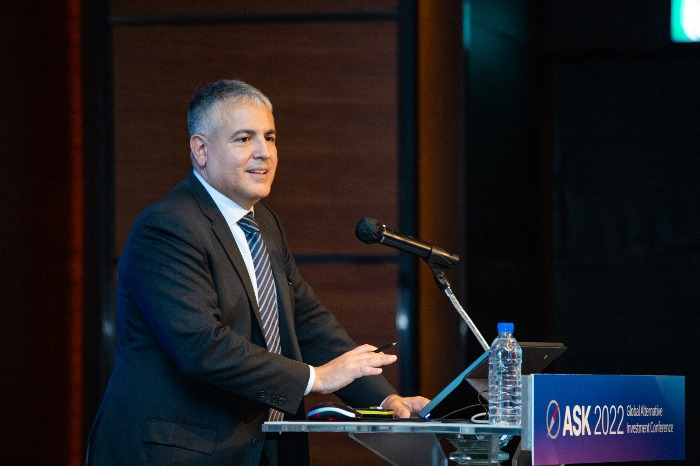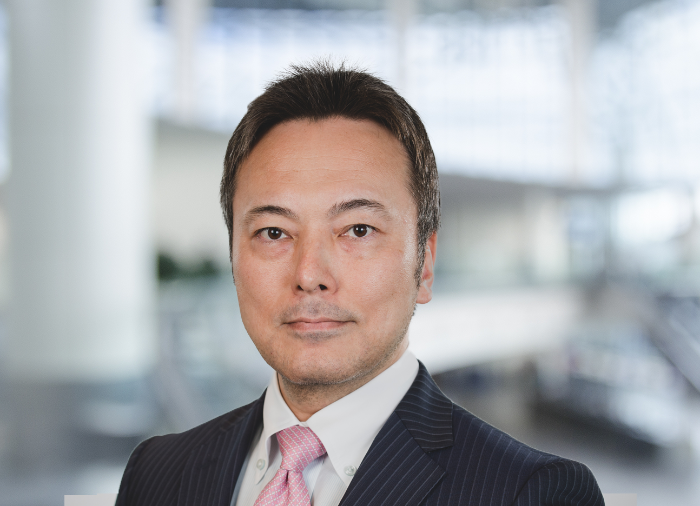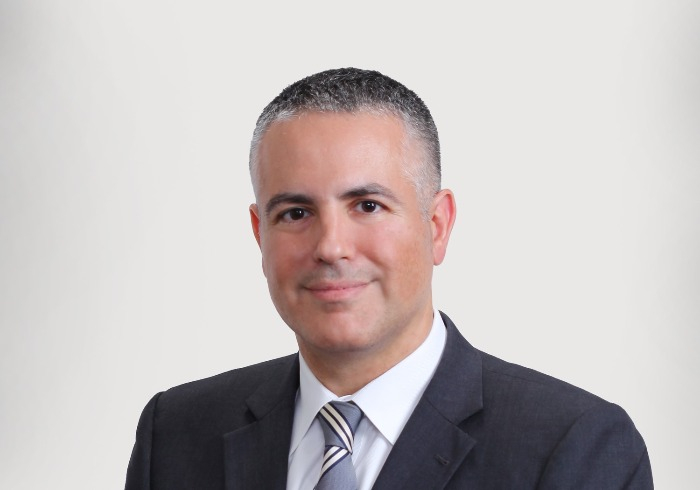Real estate
Japan’s multifamily assets shine amid market volatility: Savills IM
The Japanese residential sector shows high resilience during economic crises, particularly in Tokyo and the mid-market segment, the co-heads say
By Aug 08, 2022 (Gmt+09:00)
7
Min read
Most Read
LG Chem to sell water filter business to Glenwood PE for $692 million


Kyobo Life poised to buy Japan’s SBI Group-owned savings bank


KT&G eyes overseas M&A after rejecting activist fund's offer


StockX in merger talks with Naver’s online reseller Kream


Mirae Asset to be named Korea Post’s core real estate fund operator



Multifamily assets have been a key investment target due to their resilience amid economic volatility. Japan, with the largest real estate market in the Asia-Pacific, has absorbed significant capital from overseas institutional investors pursuing steady cash flow.
Several such investors include Korea’s Samsung Life Insurance Co. and Samsung SRA Asset Management Co., which plan to expand their investments in Japan via Savills Investment Management’s strategies. Samsung SRA's chief executive Kim Chung-keun discussed these plans at ASK 2022 in May, The Korea Economic Daily’s alternative investment conference.
The Samsung entities will work with Savills Investment Management LLP, a real estate investment manager in which Samsung Life owns a strategic stake.
Savills IM introduced core investment strategies in Japan’s residential assets in late 2020, led by professionals with decades of experience in the sector. The firm’s Japan co-heads Tadaaki Kurozumi and Tom Silecchia told The Korea Economic Daily that Japan’s multifamily assets, especially in the mid-market, are highly attractive due to their resilience, stable rental income and low inflation rate.
The following is the transcript of KED's Aug. 5 interview with Kurozumi and Siilecchia.
▲ Why is Tokyo-based residential property attractive to global institutional investors?
Silecchia: “It is because of the growing demand and limited supply. People are moving from different prefectures to the capital, and smaller households are increasing. Supply is constrained, especially in the mid-market segment.”
“Occupancy levels and rental fees have been stable during the pandemic. Basically, Tokyo remains a very attractive city to live in and offers great opportunities in every sector.”
“The Japanese residential sector has huge size and ample liquidity and is very defensive. The sector has great resilience during economic crises and doesn't just depend on economic growth. These characteristics are evident, particularly in Tokyo and the mid-market segment.”
“Current rentals are affordable compared with earlier, around 5% lower than records during the pre-global financial crisis. As a result, rentals have supported investment performance and downside protection through the pandemic. The sector also offers strong cash yields on a risk-adjusted basis.”
Kurozumi: “Tokyo keeps improving as a city to live and work. The capital has enhanced its internal connectivity and links to other cities through the infrastructure improvement ahead of the Tokyo Olympics."
“The city set up new metro stations and bus routes via the infrastructure project, which has substantially increased value in some areas. This has promoted business creation and increased employment in Tokyo."
▲ How will the global inflation and rate hikes affect the Japanese real estate market?
Silecchia: “Inflationary pressure is more modest in Asia than in other regions, and Japan has the lowest inflation rate in Asia. The Japanese government has been targeting a 2% inflation rate, but the country hasn’t yet hit that level and is forecast to fall short of 2%.”
“Also, the government has declared that it will keep interest rates low. The spread between the risk-free rate and property yields has been attractive in the country. As many central banks raise interest rates and narrow the spread, Japan will be even more attractive to investors.”
▲ If Tokyo-based residential property becomes popular with overseas investors, will it be harder to find the right assets?
Silecchia: “Residential has always been a core asset class in Japan. Wealthy individuals, smaller companies and a broad range of other local investors have bought residential assets. They invest in assets and areas where they have a deep understanding."
“The sector steadily provides high Japanese yen yields for investors. The media report on a lot of foreign investors in Japan, but the foreigners are not a big portion of the market players. Of course, when there is a large public bidding process there will be more competing participants and keener pricing, but that doesn’t represent the entire residential market.”
Kurozumi: “We prefer not to take part in open-market bids. Instead, we deal directly with sellers or creditors in over-the-counter markets. Our long-standing partnerships with investors, track record and in-depth knowledge of the market help us acquire great assets without paying a premium.”
“It is also very important to analyze micro-markets to find the right assets. Values and rentals of Japanese properties may fluctuate in smaller areas, so it is imperative to have a deep understanding of micro-market conditions.”
▲ Do you think the mid-market is the best sector for investors?
Kurozumi: “Japan has a substantial middle class -- it means there is stable demand from the mid-market sector. The stable demand is also supported by relatively low tax levels and affordable rentals for middle-income residents and weaker inflationary pressure compared to other developed countries.”
Silecchia: “Going through several cycles, we have seen that the higher monthly rentals and larger floor area make multifamily assets more volatile. After the global financial crisis, the mid-market stock recovered very quickly, particularly in Tokyo.
▲ Which types of assets and locations in Japan would you recommend? Also, are there any opportunities out of Tokyo?
Silecchia: “Modern and well-located assets are often preferable; however, some of our best-performing assets have been those with different characteristics. One example is large properties, which are distant from the city center but have good access to transportation.”
“Likewise, older properties that are in good condition and meet the most updated safety requirements for earthquakes can be good assets in a micro-market that has limited supply.”
Kurozumi: “We have acquired various residential assets in major cities outside Tokyo, such as Osaka, Nagoya, Sendai, Sapporo and Fukuoka. We have carefully approached these cities as they are more vulnerable to volatility than Tokyo. But they definitely have good investment opportunities.”
“Cities like Fukuoka, where the young population makes up a large proportion and where there is a high rate of immigration, have great opportunities in the residential sector. Fukuoka is ramping up real estate market liquidity with increasing Asian capital inflow, using the city’s geographical connectivity to other Asian countries.”
▲ How does Japan’s residential sector bring opportunities to investors concerned about ESG?
Kurozumi: “Japan is sometimes thought to be lagging in terms of ESG, but the country has long focused on power efficiency as the world’s major energy importer. It has also a high public awareness of ESG management.”
“We have strived to enhance ESG performance and recommended that asset managers take necessary measures to incorporate these guidelines. Additionally, we have in-house design and architecture experts to spot properties that can improve ESG factors and the assets’ values.”
Silecchia: “We will strengthen ESG performance by intensifying partnerships with real estate developers. We can improve energy efficiency by installing some relevant equipment and monitoring the energy consumption data.”
Headquartered in London, Savills IM has a 30-year track record in global real estate investment. It manages €26.9 billion in assets as of the end of March 2022. By country, the UK makes up 28% of the AUM, followed by Italy with 18%, Germany with 11% and Benelux accounting for 9%. Each France, Spain and Japan make up 5% of the AUM.
By sector, office accounts for the largest proportion of 33%. Logistics and industrial make up a combined 23%, followed by retail with 20%. Exposure to residential is 5%.


Write to Chang Jae Yoo at yoocool@hankyung.com
Jihyun Kim edited this article.
More to Read
-
 Alternative investmentsPOBA, CalSTRS invest $235 mn in two US multifamily asssets
Alternative investmentsPOBA, CalSTRS invest $235 mn in two US multifamily asssetsFeb 08, 2022 (Gmt+09:00)
1 Min read -
 Alternative investmentsHana jointly acquires Boston-based multifamily for $262 mn
Alternative investmentsHana jointly acquires Boston-based multifamily for $262 mnJan 18, 2022 (Gmt+09:00)
1 Min read -
 Stake investmentsSamsung Life buys 25% stake in Savills IM for $90 mn
Stake investmentsSamsung Life buys 25% stake in Savills IM for $90 mnMay 27, 2021 (Gmt+09:00)
1 Min read -
 Alternative investmentsHana buys Osaka logistics center for about $140 mn
Alternative investmentsHana buys Osaka logistics center for about $140 mnMay 28, 2021 (Gmt+09:00)
3 Min read -
![[Interview] Korean office building market set for further growth: Savills](/data/ked/image/2018/10/Savills-Korea-CEO_2.145x94.0.jpg) [Interview] Korean office building market set for further growth: Savills
[Interview] Korean office building market set for further growth: SavillsOct 22, 2018 (Gmt+09:00)
3 Min read
Comment 0
LOG IN


